News
Evaluating All 15 of Russia’s Operational Fighter/Interceptor Classes: Ranked From Most to Least Dangerous
Although only a fraction of its Soviet era size, when it was by far the world’s largest, the Russian fleet of tactical combat jets today is still the world’s third largest by numbers with over 800 airframes in service and one of the most diverse range of aircraft in the world. The country fields more classes of fourth generation tactical combat jet than any other, and has since the USSR’s disintegration strongly favoured heavyweight aircraft capable of patrolling the country’s vast airspace or penetrating deep into NATO territory as needed. Although over 95 percent of fighters acquired since the mid 1990s have been variants or derivatives of the Su-27 Flanker air superiority fighter, which when it entered service in the mid 1980s was widely considered the top fighter fielded by any air force in the world, the Flanker has itself been developed into a diverse range of fighter classes some of them highly specialised. A look at all 15 fighter and interceptor classes in the Russian Military, ranked broadly by their combat capabilities, is given below.
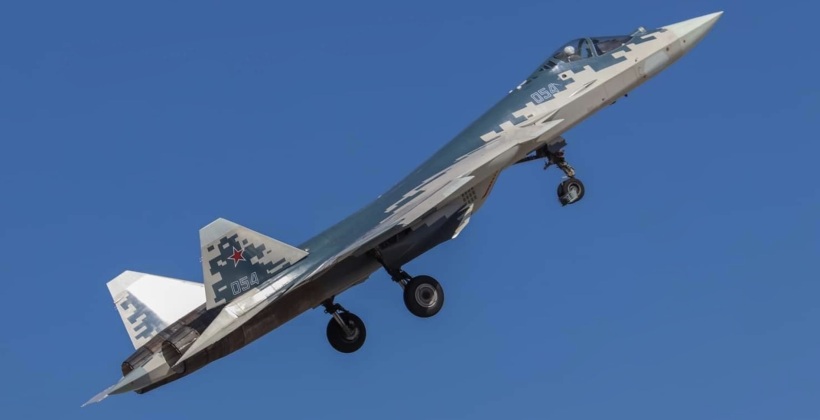
Su-57: 10 Aircraft
Russia’s only post fourth generation fighter, the Su-57 has been produced at a low rate after multiple serious delays to the program. Only ten are currently in service, with the fleet scheduled to reach 50 aircraft in 2026 and 76 aircraft by the end of the following year, although the production rate is expected to increase considerably afterwards. The fighter is a heavyweight and a direct successor to the Su-27 Flanker, with a radar evading stealth profile, an extremely long range, and high situational awareness provided by six AESA radars and an infrared search and track system. Only a small number of basic Su-57s are expected to be produced, with the enhanced Su-57M reported to have first flown in October 2022 and expected to replace the original in production in early 2024.
The enhanced aircraft is intended to serve as a ‘5+ generation’ fighter allowing Russia to partly bridge the gap with ambitious sixth generation fighters currently under development in China and the United States. Some of its most prized features include its extreme manoeuvrability, the high capabilities of its R-77M and R-37M air to air missiles, and its access to a wide range of cruise missile classes including in the near future hypersonic missiles. The Su-57 is the only fifth generation fighter to have conducted standoff range air strikes against a state adversary, after supporting operations in Ukraine including on air defence suppression missions, with multiple reports indicating it may have also been involved in air to air combat which would also be unique for an aircraft of its generation.
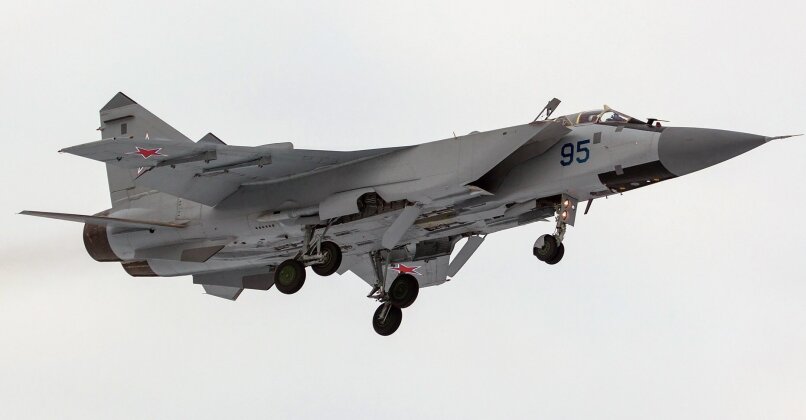
MiG-31BM/BSM: 105 Aircraft
Although Russia has not built MiG-31 Foxhound interceptors since 1994, when the enhanced MiG-31M variant was cancelled, the MiG-31BM/BSM represents a heavily enhanced variant of a potent Cold War era design which is still unrivalled in many aspects of its performance. The fastest operational combat jet in the world, the Foxhound is prized for the extreme size of its sensor suite with the Zaslon-M radar providing a degree of situational awareness that few combat aircraft can rival. The sheer size of the interceptor also allows it to carry six oversized air to air missiles and six standard sized missiles in a standard configuration, placing it in a league of its own worldwide in terms of firepower. Its R-37M missiles have an extreme 400km engagement range and Mach 6 speed, and a highly complementary to the aircraft’s powerful sensors and its very high altitude ceiling and cruising speed. MiG-31s deploying R-37Ms have reportedly been among Russia’s most potent aerial warfare assets in the Russian-Ukrainian War, which represents the first time the MiG-31 has seen combat. The Foxhound can use its missiles at its maximum altitude, allowing them to travel very significantly further than those launched from any other Russian or NATO jet. The Foxhound is the world’s largest tactical combat aircraft, and can sustain a supersonic cruising speed over long periods allowing it to quickly respond to threats across Russia’s vast territory.
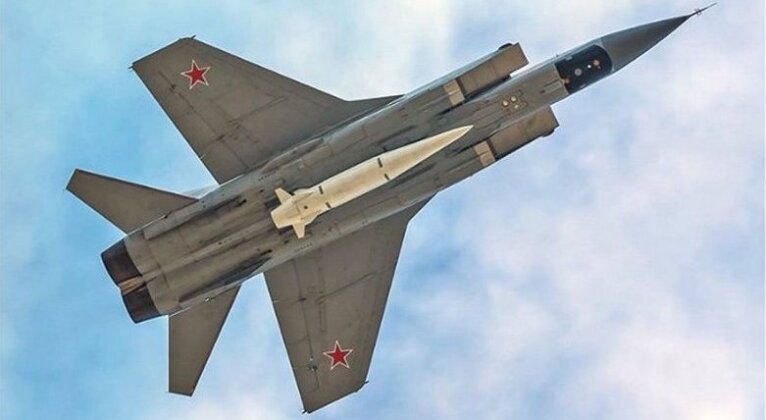
MiG-31K/I: 32 Aircraft
First introduced into service in 2017, the MiG-31K is a modification of the Foxhound airframe for a strike role and deploys the Kh-47M2 hypersonic ballistic missile. The highly manoeuvrable missile, with an extreme 2000km range and Mach 10 speed, makes the aircraft likely the world’s premier strike fighter, allowing it to neutralise any surface combat ship with a single well placed hit. The MiG-31K has consistently been deployed to priority locations where tensions are particularly high, including to the Arctic to supplement interceptor variants of the Foxhound and to Syria, Kaliningrad and Belarus in 2022 at times of high tensions with NATO. The aircraft provides an asymmetric means of countering enemy air defences and potentially delivering nuclear strikes, and reportedly proved highly effective in May 2023 when used to neutralise American Patriot air defence systems in the Ukrainian capital Kiev. An enhanced variant of the MiG-31K, the MiG-31I, was unveiled in August 2022 and benefits from improvements to its avionics. The MiG-31K/I has also served as the basis for developing a space warfare Foxhound variant optimised for neutralising satellites which is speculated to be designated MiG-31D.
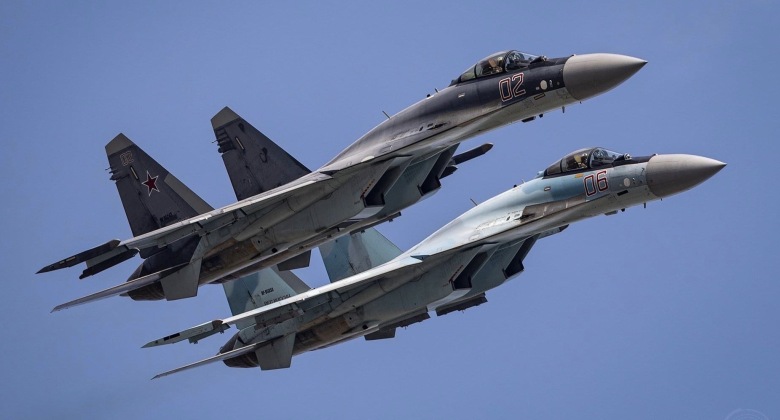
Su-35S: 114 Aircraft
The most well known post-Soviet Russian fighter model, the Su-35S today forms the backbone of the Russian air superiority fleet and represents the most ambitious Su-27 derivative designed for air to air combat. Although based closely on the Su-27M/35 and Su-37 which completed development and were made production ready in the 1990s, a lack of funding and ongoing post Soviet decline on Russia’s combat aviation sector meant the Su-35S would only enter service in 2014. The aircraft is based closely on prior Soviet programs to enhance the air to air potential of the basic Su-27 design, although it benefits from conservative improvements in avionics and weaponry over the Su-37 prototypes of the 1990s as these technologies have advanced. The Su-35 was the first fighter in the world to enter service using three dimensional thrust vectoring engines for extreme manoeuvrability, and has a much higher endurance and significantly reduced radar cross section compared to the original Su-27. Its Irbis-E radar has a very wide 120°maximum deflection angle and a 95km detection range against stealth targets, while its wing roots house two N036B-1-01 L-Band AESA radars providing triple radars and a complementary OLS-35 infrared search and tracking system. The fighter lacks the extreme radar size, altitude or missile carrying capacity of the MiG-31, or the fifth generation features or sextuple radars of the Su-57, but is nevertheless widely considered capable of challenging current NATO fighters particularly when supported by ground based air defences. The fighter has gained multiple air to air kills over Ukraine, and likely has a higher air to air kill count than any other post-Cold War fighter count.
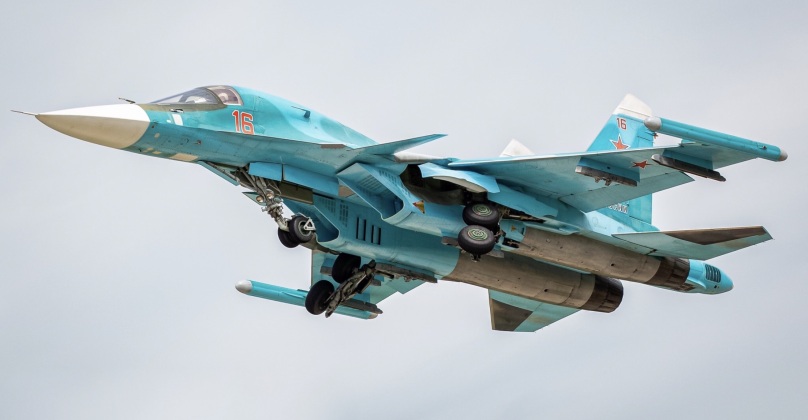
Su-34: 130 Aircraft
Entering service alongside the Su-35 in 2014, the Su-34 has been acquired in much larger numbers by the Russian Military than any other post Cold War combat jet specifically to replace the Soviet built fleet of Su-24M dedicated strike fighters. The aircraft is also a Su-27 Flanker derivative, and while capable in air to air combat it excels as a strike platform with a range comparable to smaller strategic bombers. With a reduced radar cross section and access to a very wide range of standoff weapons, Russian investment in the aircraft reflects its near unique continued emphasis on retaining dedicated strike units rather than relying on multirole fighters for strike missions. It provides an effective means of holding targets far beyond the country’s borders at risk. The Su-34 has seen significant losses to surface fire over Ukraine, against a kind of adversary and air defence network very different to those of NATO which the Su-34 was primarily designed to counter. The much improved Su-34M variant and a dedicated air defence suppression variant benefitted from design inputs based on the experience of operations over Ukraine and have provided significant new capabilities.
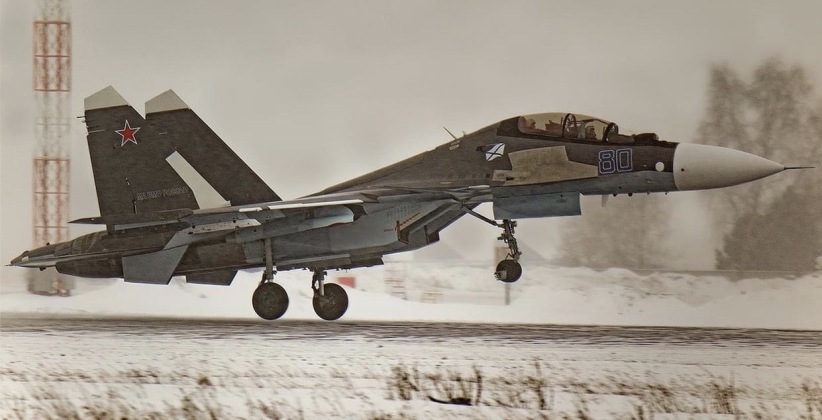
Su-30SM/SM2: 113 Aircraft
The Russian Air Force began acquisitions of the Su-30SM shortly before the Su-35, with the aircraft being based closely on the customised Su-30MKI developed for the Indian Air Force – a Su-30 derivative benefitting from advanced features from the cancelled Su-37 air superiority fighter. The fighter is a cheaper complement to the Su-35 and is less specialised in an air superiority role, with weaker engines, two rather than three dimensional thrust vectoring, a single radar rather than triple radars, and a lower endurance. Its twin seat configuration optimises it for strike missions to accommodate a weapons systems officer, although its air to air capabilities are still formidable improving significantly on those from the basic Flanker airframe. The Su-30SM has also proven popular abroad with Kazakhstan and Belarus being leading clients, while Algeria has continued acquisitions of the very similar but customised Su-30MKA. An enhanced variant of the aircraft using the Su-35’s AL-41 engines, the Su-30SM2, entered service in January 2022 with the entire fleet expected to be enhanced to this standard once the lives of their existing AL-31 engines ends. The new engine provides three dimensional thrust vectoring capabilities and improves endurance and manoeuvrability.
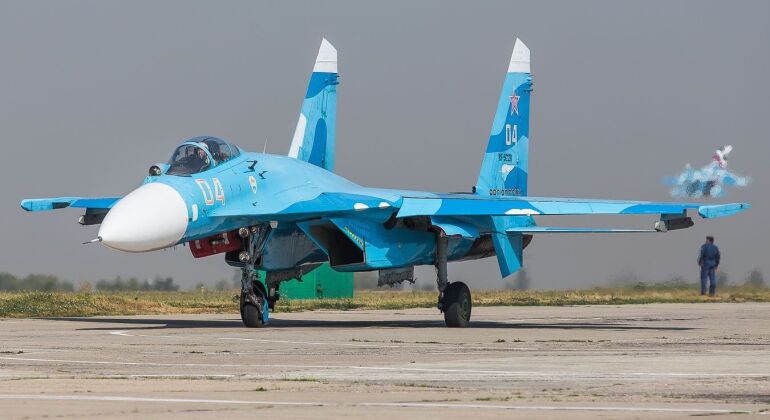
Su-27SM2/SM23: 24 Aircraft
The most capable Su-27 variant developed, the Su-27SM2/3 represents an enhancement of the Cold War era design with the Su-35’s Irbis-E radar and with the more powerful AL-31F-M1 engines. 12 Su-27SM3s were delivered from 2010-2011, making them the most capable air superiority fighters in the Russian Air Force at the time, with the decision based on the need to make use of surplus unassembled Su-27 kits which had initially been expected to be sold to China. The Su-27SM2s are older Su-27s which were modernised to the same standard after having entered service, with 12 old Flankers given such upgrades. Alongside new radars, the aircraft also received entirely new avionics and access to a wide range of new weapons types, providing performances in some ways comparable to the Su-35 albeit with higher radar cross sections, the lack of triple radars and significantly poorer flight performances.
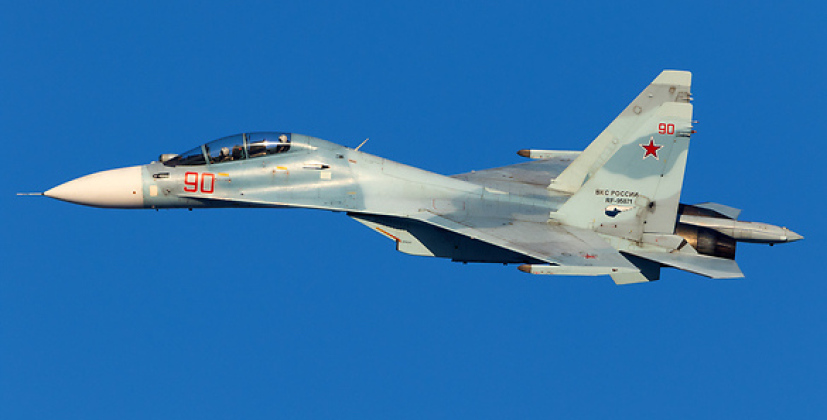
Su-30M2: 19 Aircraft
The last Su-30 fighters built at the Komsomolsk-on-Amur Aircraft Plant before it transitioned to producing the Su-35, the Su-30M2 was acquired largely to prevent the facility from stopping its production lines with 20 ordered for the Russian Air Force and serving primarily in training roles. The facility had been building Su-30s for export for close to 15 years, starting with the customised Su-30MKK financed by Chinese orders in 1997 and followed by the Su-30MK2. These provided a cheaper alternative to the Su-30MKI family built at the Irkutsk plant which were sold to China, Venezuela, Vietnam and Uganda. The Russian Air Force did not field a similarly capable aircraft until the Su-30M2 was commissioned in the early 2010s due to the lack of investment in acquisitions, meaning this was the first acquisition of a squadron from a post-Cold War fighter class. As an extended range twin seater the Su-30 was initially developed as an interceptor to replace the MiG-25 in the Soviet fleet, but evolved into a multirole fighter due to customisation requirements from China and India.

MiG-35: 6 Aircraft
An enhanced derivative of the MiG-29 medium weight fighter the MiG-35 represents the only non heavyweight fighter class acquired by the post Soviet Russian Air Force. While an initial production batch of 35 aircraft was repeatedly announced, only six have been delivered with few expectations for further deliveries. This has been a direct result of the Russian Defence Ministry’s much greater interest in acquiring heavyweights based on the Flanker design, which although more costly both to build and to operate are considered more cost effective. The MiG-29 was developed during the Cold War for deployment near the frontlines with NATO in Central and Eastern Europe, with the collapse of the Warsaw Pact leaving the class and its successor with a much more limited role in Russian service.
The MiG-35 is closely related to the enhanced MiG-29M, which has proven popular on export markets and benefits from a phased array radar, new engines, an increased fuel capacity and fifth generation level avionics and weaponry. The MiG-35 is a highly customisable aircraft which improves on these features further, including with a greater missile carrying capacity and the option for integration of an AESA radar. Three dimensional thrust vectoring engines were developed for the aircraft but not integrated onto production variants in order to reduce costs. Further cost cutting means the MiG-35s in Russian service have not benefited from advanced options such as AESA radars. The aircraft may see only a short service life in frontline roles should they fail to stimulate overseas demand in the fighter class, and are likely to be relegated to a training role should production not progress beyond the initial six fighters.
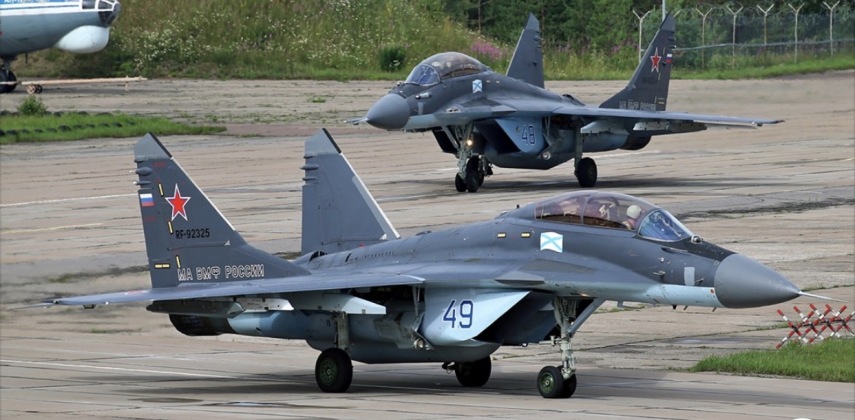
MiG-29KR/KUBR: 23 Aircraft
A derivative of the MiG-29M designed for aircraft carrier operations, the Russian Navy acquired the MiG-29K for its sole carrier the Admiral Kuznetsov after India ordered much larger numbers of the aircraft for its own navy. Although the Russian Navy initially favoured modernised variants of the Su-33 Flanker, which was another Su-27 derivative, a lack of orders from China for such aircraft and India’s preference for the smaller MiG-29K led it to acquire the latter. This allowed it to avoid the costs of starting production for a relatively small Flanker order. The MiG-29K is very significantly more capable than Soviet built MiG-29s, with newer airframe materials, avionics, engines and weapons making it highly viable for 21st century warfare – although it still has a much lower endurances and smaller radar than Flankers.
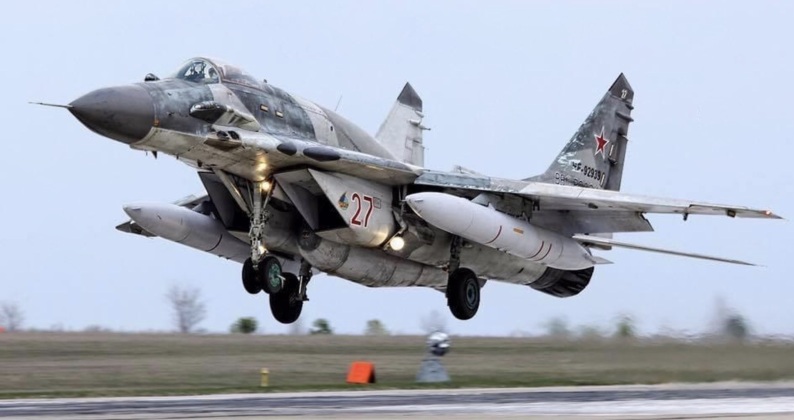
MiG-29SMT/UBT: 17 Aircraft
The MiG-29SMT was developed as an upgrade package for Soviet built MiG-29s in storage, many of which remain unassembled in storage, and was initially intended to be applied across the Russian MiG-29 fleet. Plans for such modernisation were cancelled to reduce costs, although the package was used to modernise MiGs from storage for export most recently in the 2020s for Syria and India. MiG-29SMTs sold to Algeria in the 2000s were notably rejected, on the basis that they were not newly built airframes and had an inferior quality, with Su-30MKAs ordered to replace them later followed by orders for the new MiG-29M. The MiG-29SMTs built for Algeria were instead adopted by the Russian Air Force, although they have been largely relegated to training roles. The aircraft benefit from an improved fuel capacity and new engines that are both more powerful and more fuel efficient, as well as much improved avionics and sensors.
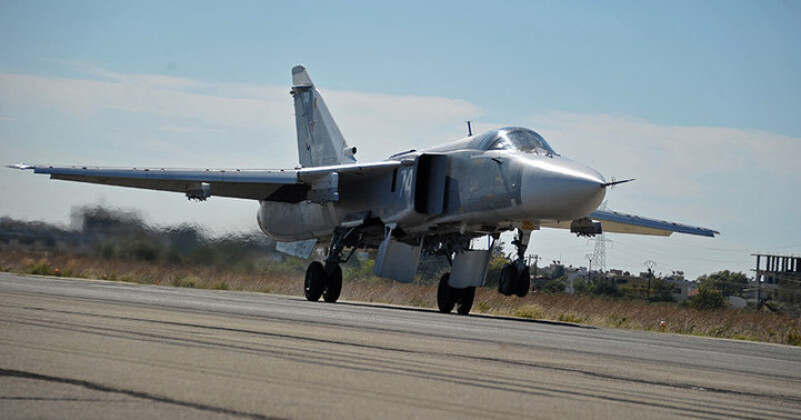
Su-24M/M2: 76 Aircraft
Previously the most numerous single fighter class in the Russian Military, the Su-24M was quickly phased out of service in the 2010s replaced by the Su-30SM and Su-34. Remaining aircraft have largely been modernised with 21st century avionics and advanced standoff weapons and electronic warfare systems. The fighters were deployed extensively for combat operations in Syria from 2015, although against the much more capable air defence network fielded by the Ukrainian Military they have largely been held back. All remaining aircraft are expected to be retired well before the end of the decade as Su-34 production continues. The Su-24M is the last variable swept wing fighter operational any of the world’s largest air forces, and further non-combat Su-24 airframes serve in the Russian fleet as dedicated reconnaissance aircraft.
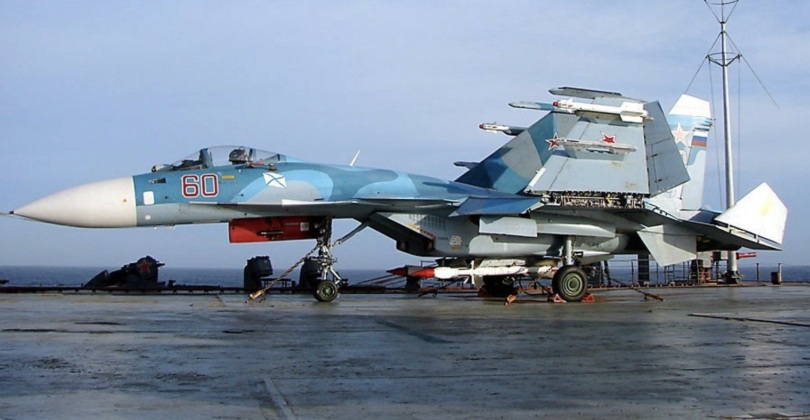
Su-27SM/Su-33: 53 (35/18) Aircraft
The Su-27SM represented a highly conservative upgrade for a portion of the Su-27 fleet pursued in the 2000s as the Russian economy and defence budget began a slow recovery from the crises of the 1990s. Improvements included integration of satellite navigation systems, liquid crystal displays and a new radar and flight computer. The aircraft were made compatible with guided bombs and Kh-31 cruise missiles, making them significantly more versatile, and had their fuselages, wings and landing gear strengthened to allow them to carry more weapons. The first regiment entered service in 2004, and at the time the package was intended to prolong the Su-27’s service life until they began to be replaced by fifth generation fighters from around 2015. A fifth generation fleet failed to materialise that decade, however, and the Su-27s are expected to be retired before 2030. The Su-33 which entered service in the 1990s represents a navalised Su-27 derivative optimised for deployment from aircraft carriers, and has many very similar avionics improvements to the Su-27SM. It was at the time considered the most capable fighter in the Russian Air Force, as more advanced designs such as the Su-30MKK and Su-37 were developed exclusively for export.
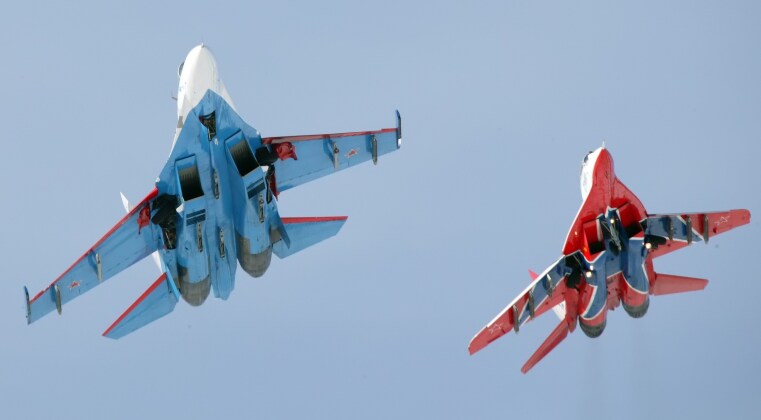
Su-27: 30 Aircraft
Designed to go head to head with and outperform the U.S. Air Force’s F-15C/D Eagles, the Su-27 remains one of the most influential combat aircraft of its generation with almost all Russian fighters built in the last 30 years being designs derived from it. After the USSR’s disintegration the United States Military gained access to Su-27s through Belarus, while U.S. Air Force F-15s flew against Russian Air Force Flankers during exercises. American assessments consistently found that the Su-27 was far more capable in air to air combat than the F-15 and thus than any fighter fielded by a Western air force. A revolutionary fighter for its time, the basic Su-27 today is still considered near obsolete and is expected to be phased out of the Russian Air Force before 2025. The limited capabilities were demonstrated by the poor results with which the Ukrainian Air Force attempted to use its own Soviet built Su-27s against Russian fighters, resulting in overwhelming losses. Although still impressive in its range and manoeuvrability, the Su-27’s 1980s avionics in particular leave much to be desired by the standards of the 2020s.
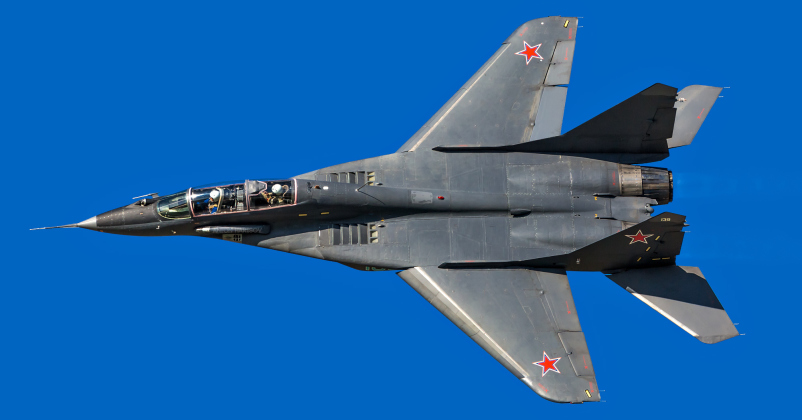
MiG-29/MiG-29UB : 70 Aircraft
The MiG-29 fleet has faced some of the deepest cuts since the Soviet Union’s disintegration, and while approximately 800 were in service in 1991 with dozens more set to join the fleet every year, today Russia fields only around 110 – 64 percent of which are unmodernised. The aircraft are expected to continue be phased out of service quickly in favour of heavier fighter classes, with some potentially being replaced by Su-57s as these begin to form a greater portion of new acquisitions. The original MiG-29, although a world leader in manoeuvrability in its time, has avionics poorly suited to the network centric battlefields of the 21st century and a range too limited for most air defence duties in Russia. These issues were expected to be remedied by the mid 2010s through investment in the MiG-29SMT package before this was cancelled. The fighters are neverthless potentially dangerous and can operate from makeshift runways, out climb almost any challengers and have among the world’s very top levels of manoeuvrability without relying on thrust vectoring. As among the first fighters in the world to integrate high off boresight targeting capabilities, allowing them to engage at very extreme angles within visual ranges, this remains a critical feature which even some fifth generation fighters fielded abroad have not yet benefitted from. MiG-29s are expected to form the bulk of Russian Air Force reserve units into the 2030s, and potentially much longer, despite being phased out of frontline roles.












